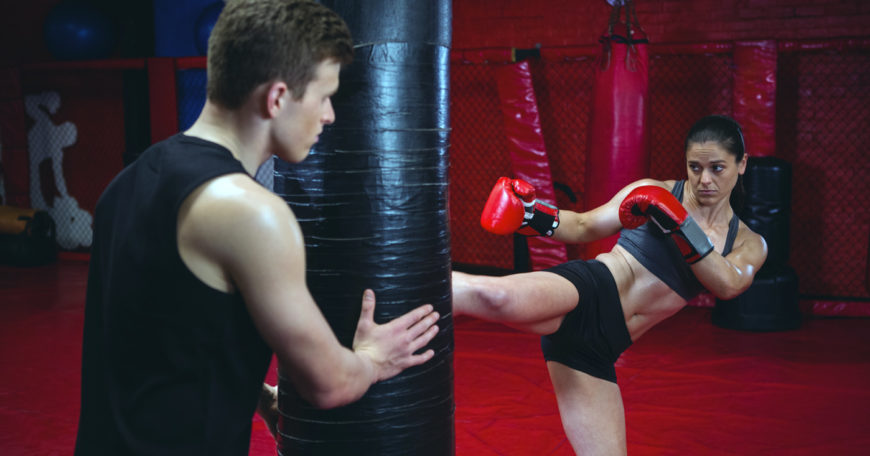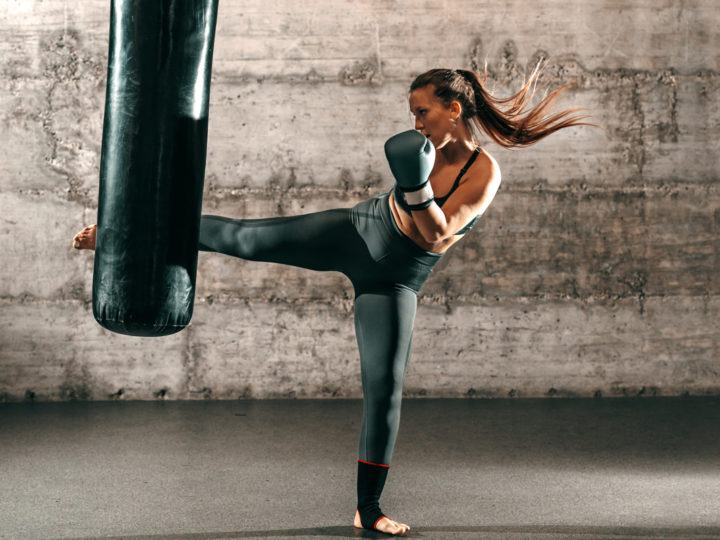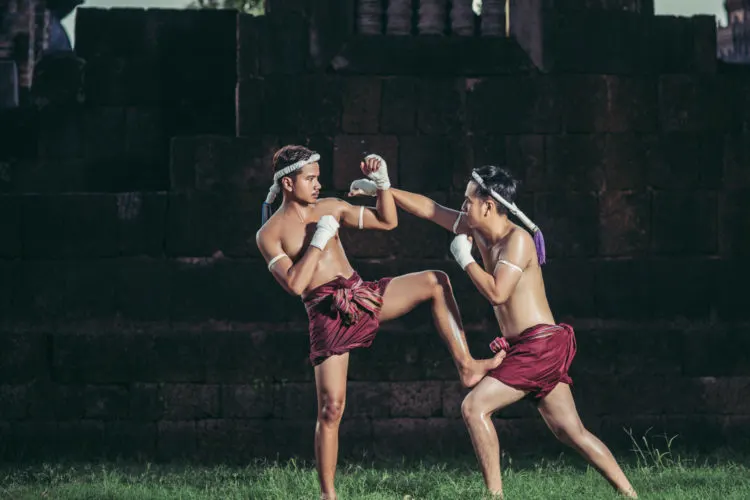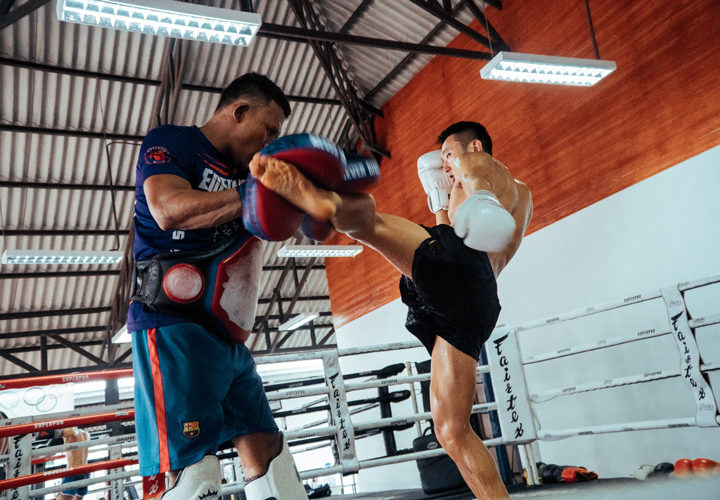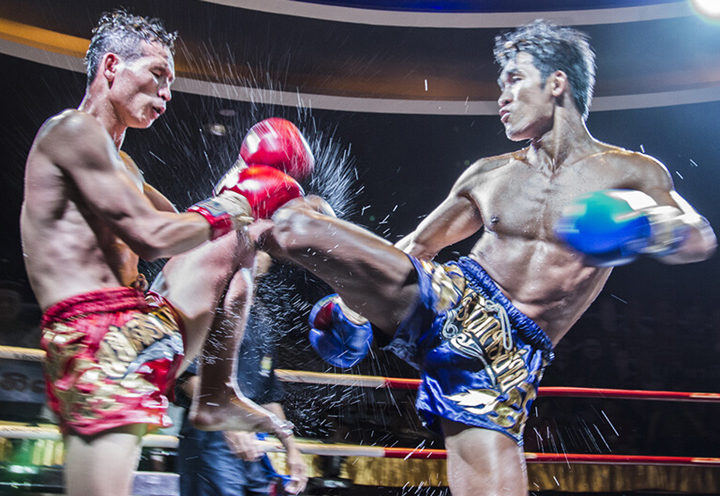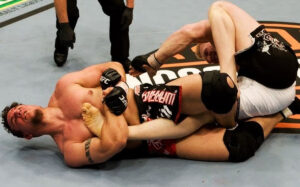Brazilian jiu-jitsu is a physically demanding grappling art that will help you build strength, physical endurance, and cardio. It’s no surprise that even life-long athletes in other sports feel both physically and mentally exhausted after trying even one BJJ class.
In fact, many jiu-jitsu students soon find that they don’t need to supplement their time on the mats with additional exercise, instead being content with the challenges they get from training jiu-jitsu.
Still, there are plenty of reasons to change up your training routine and add another sport, such as kickboxing or boxing, into the mix. By taking striking classes in addition to jiu-jitsu, you can improve your physical fitness while preventing yourself from getting burned out by doing the same exercise routine over and over again.
Here’s why BJJ students should consider taking striking classes as well:
It improves your cardio.
A fast-paced roll on the mats will get the heart pumping, but so will an hour of hitting pads or sparring. Kickboxing is known for being a cardio-focused activity, and even if you don’t feel like getting hit, there has been a recent rise in “cardio kickboxing” classes that will give you the satisfaction and physical benefits of punching and kicking without the risk of black eyes and sore ribs.
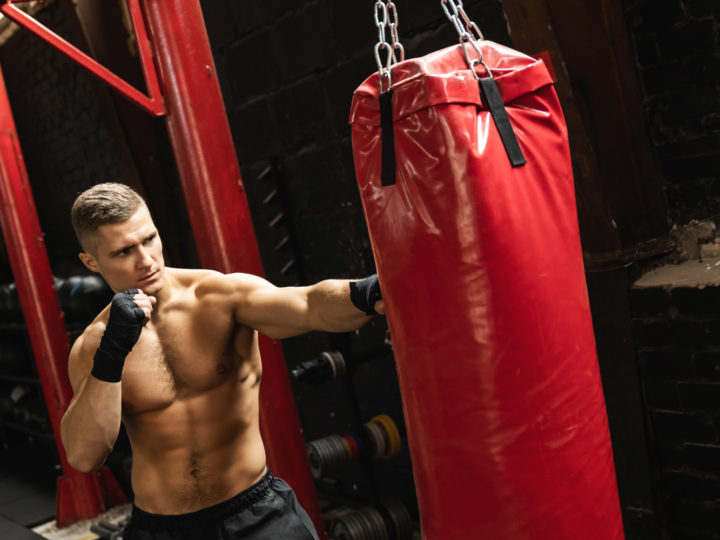
The movements practiced in striking classes may not be the same as the ones you practice in jiu-jitsu, but by finding another way to get your heart rate up, you can increase your endurance for tough rolls and grappling competitions. Plus, while jiu-jitsu may not always happen on the feet, most BJJ athletes still spend a significant amount of time trying to land a takedown or passing guard. Boxing and kickboxing can increase your endurance in BJJ while you’re on your feet trying to gain an advantageous position.
Your increased endurance and fitness won’t just come from the striking aspects of a boxing or kickboxing class, either. Holding pads is a workout in itself, and given how many boxing coaches make students warm up by skipping rope for a few minutes, you’ll have plenty of opportunities to improve your fitness. If your BJJ coach has ever recommended that you increase your cardio outside of class, but the thought of running or cycling isn’t appealing to you, striking can be the perfect alternative.
Read also: How Muay Thai & Kickboxing Can Help You Lose Weight
It quickens your reflexes.
As any martial artist knows, a lot of what makes elite athletes great is their reaction time. In jiu-jitsu, we develop tactile awareness, feeling our opponent’s movement and making reflexive decisions to help us transition to better positions.
The same happens in boxing on a more visual level, with students learning how to make split-second decisions based on the angle and direction of their opponent’s movements.
While most jiu-jitsu matches operate differently than boxing matches, the reflexes developed in striking classes can still help you in a jiu-jitsu match. Consider how parrying or dodging straight punches might help you do the same to an opponent who tries to snatch your gi collar.
In fact, simply getting used to quicker movements can help train your brain and body to respond to fast opponents as they dance around your guard and reach for your limbs. Even when the movements you learn in boxing don’t directly translate to jiu-jitsu, the muscle memory you develop in striking can still benefit your grappling.
It’s a break from the norm.
There’s something to learn every day in jiu-jitsu, so no two classes or open mats ever truly feel the same. Still, our brains and bodies can get stuck in a rut when we do the same activities every day.
Sometimes, this can manifest as boredom, making you reluctant to show up to jiu-jitsu. Other times, it can feel more mental than emotional, causing you to struggle more when learning new techniques. Unfortunately, getting stuck in a BJJ rut has caused many students to take extended breaks from the sport, and while many of them come back after some time away, others never return to the mats.
Boxing or kickboxing can add variety to your routine, especially if you find yourself getting a bit tired of rolling around on the ground. Much like trying new foods, striking can expand your martial arts palate. You don’t need to have dreams of becoming a pro boxer or pursuing an MMA career, either. There are many students who
only want to compete in jiu-jitsu, but take one or two boxing classes per week as a “treat” so they don’t get bored with all the time they spend drilling sweeps and guard passes.
Spending valuable time and energy training boxing when you have bigger goals in BJJ may seem counterproductive, but it may be just what you need to take your jiu-jitsu to the next level. Consider how much more productive you become at work after a short break, or how much you appreciate your loved ones after you’ve spent some time away from them. Taking the occasional striking class can serve as a productive “break” from jiu-jitsu, and you may come back to your next BJJ class with your mind refreshed and ready to finally nail the technique you’ve been struggling with.
It can improve your coordination.
In any given jiu-jitsu class, it’s not uncommon to hear questions like, “Am I grabbing with my right hand or my left hand?” and, of course, “Whoops, sorry, are you ok?”
Whether your greatest struggle on the mats is telling your right from your left or moving around your rolling partner without accidentally kneeing them in the head, striking classes can help. As you practice different punches and kicks, you’ll start to develop better instincts for whether to move the right side of your body or the left. Having to make these split-second decisions on your feet can also help you on the ground as you determine which body part needs to move in order to achieve the transition or submission you want in jiu-jitsu.
Boxing can also help you develop better bodily awareness. Whether you’re hitting a bag, pads, or a human target, being good at striking requires you to quickly judge the distance between you and your target. Understanding things like how far away you should be to land the perfect kick and how low you need to duck to evade a punch can help you become better coordinated in jiu-jitsu, especially if you’re trying to work takedowns and throws. Distance and angles are important in any combat sport, and the practice you’ll get in boxing will help make you a more coordinated, less clumsy BJJ student.
It can increase your pain tolerance.
Should you decide to progress in striking to the point that you want to spar, you might find that you’re a bit more “durable” in BJJ as well. While jiu-jitsu doesn’t (usually) involve striking, an accidental kick to the head during a triangle choke attempt can be frustrating enough to throw you off your game.
Many jiu-jitsu competitors will use this to their advantage, employing pain as a tool to distract their opponents by doing things like digging their fist into their neck while reaching for lapels. It’s an annoying, but valid strategy, and if you’re not used to pain, these tactics might cause you to lose your match.
Just as we get accustomed to the lumps and bumps we take in jiu-jitsu, boxing can also increase your pain tolerance. If you’ve ever been hit in the face, you know that it’s a jarring experience that can make your entire brain feel scrambled inside your skull. Much as we get used to the feeling of being choked, though, people who consistently spar in boxing and kickboxing also get used to being hit.
It’s not that the pain stops, but rather that it’s no longer enough to distract you from your goal. Even if you’re not getting hit in the face and body repeatedly in jiu-jitsu, being a target for fists and feet in striking class can help you stay focused when accidents (or deliberate attempts to hurt you) happen on the mats.
Rolling With the Punches
Jiu-jitsu and striking may be totally different sports, but the skills you learn in both arts can cross over and benefit each other. Though it may be hard to find time in your schedule for additional classes, taking a boxing or kickboxing class even once a week can help improve your physical fitness and coordination while diversifying your exercise routine, keeping your body and mind in better condition for jiu-jitsu.
Consider adding boxing into your BJJ routine. Just as there’s a good jiu-jitsu gym out there for everyone, you’ll find a striking class that suits your needs, whether you want to progress to full-contact sparring (and perhaps even compete) or you just want to hit a bag for an hour. As with any new hobby, patience is important for progress, but if you’re consistent, you may start seeing results even sooner than you’d think.

